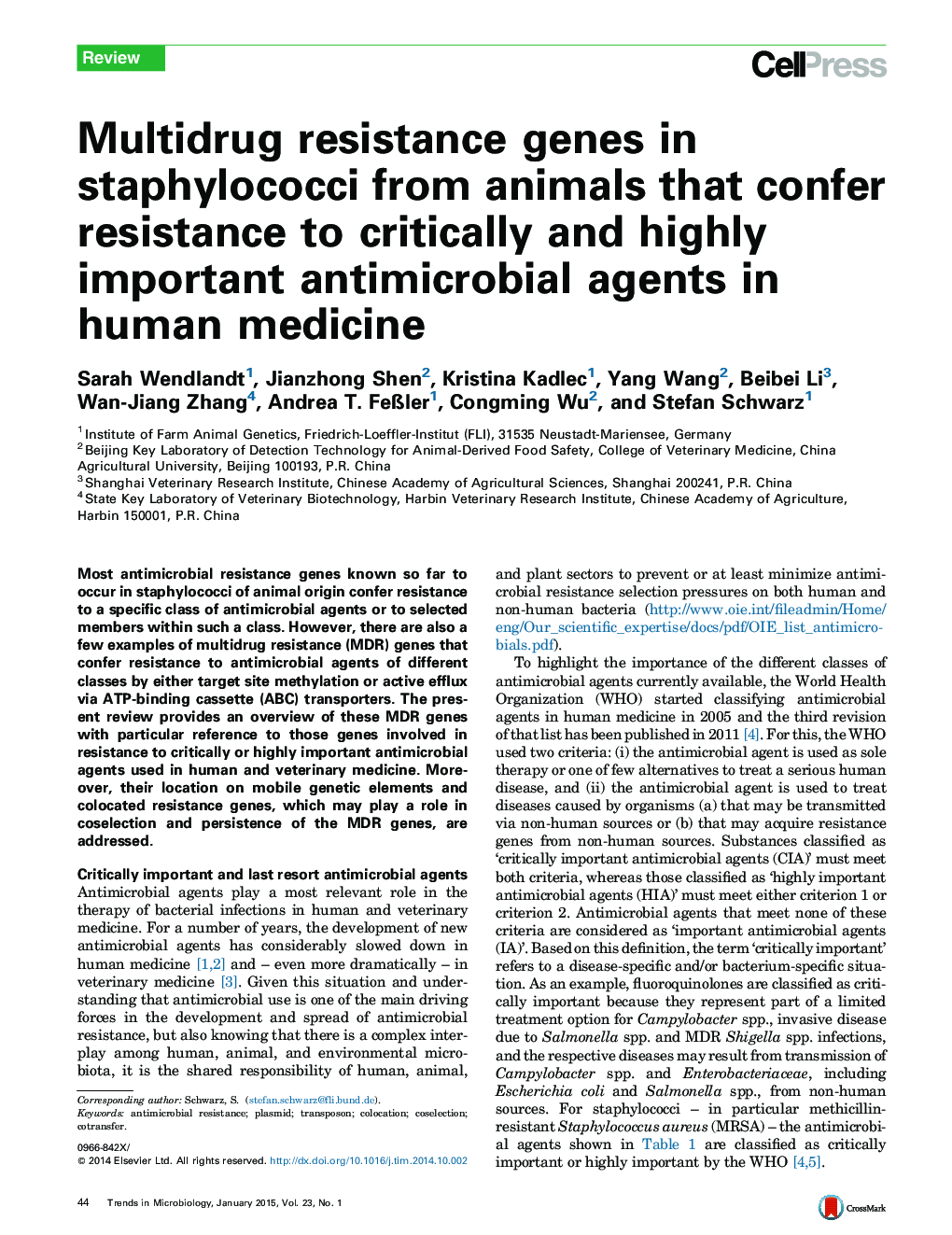| Article ID | Journal | Published Year | Pages | File Type |
|---|---|---|---|---|
| 3421899 | Trends in Microbiology | 2015 | 11 Pages |
•Multidrug resistance (MDR) genes confer resistance to critically and highly important antimicrobial agents.•MDR genes of staphylococci from animals include erm, vga, lsa(E), and cfr genes.•MDR genes confer resistance by target site methylation or efflux via ATP-binding cassette (ABC) transporters.•MDR genes are often located on plasmids and transferred across species and genus borders.•MDR genes are often colocated with other resistance genes allowing for coselection.
Most antimicrobial resistance genes known so far to occur in staphylococci of animal origin confer resistance to a specific class of antimicrobial agents or to selected members within such a class. However, there are also a few examples of multidrug resistance (MDR) genes that confer resistance to antimicrobial agents of different classes by either target site methylation or active efflux via ATP-binding cassette (ABC) transporters. The present review provides an overview of these MDR genes with particular reference to those genes involved in resistance to critically or highly important antimicrobial agents used in human and veterinary medicine. Moreover, their location on mobile genetic elements and colocated resistance genes, which may play a role in coselection and persistence of the MDR genes, are addressed.
